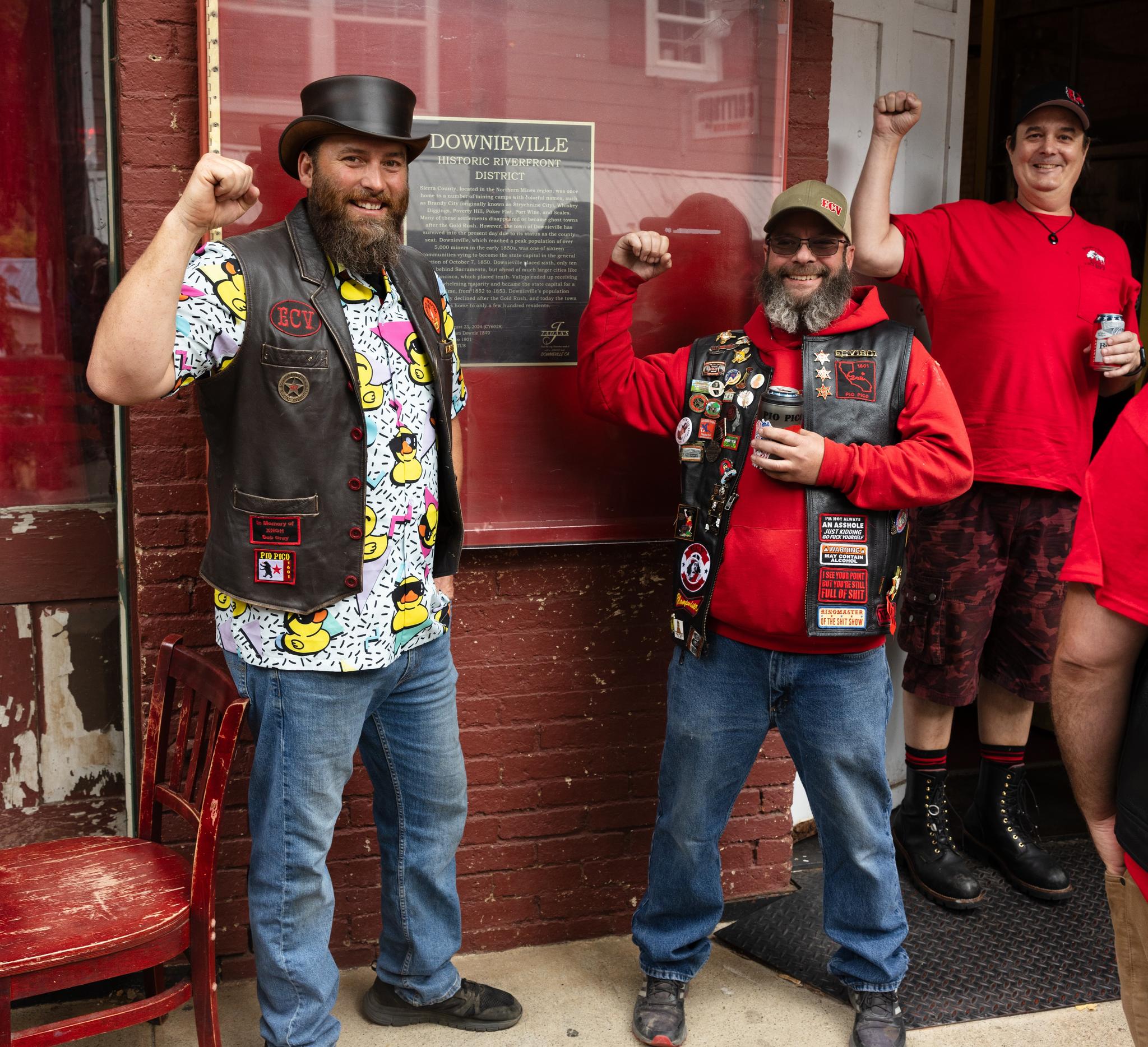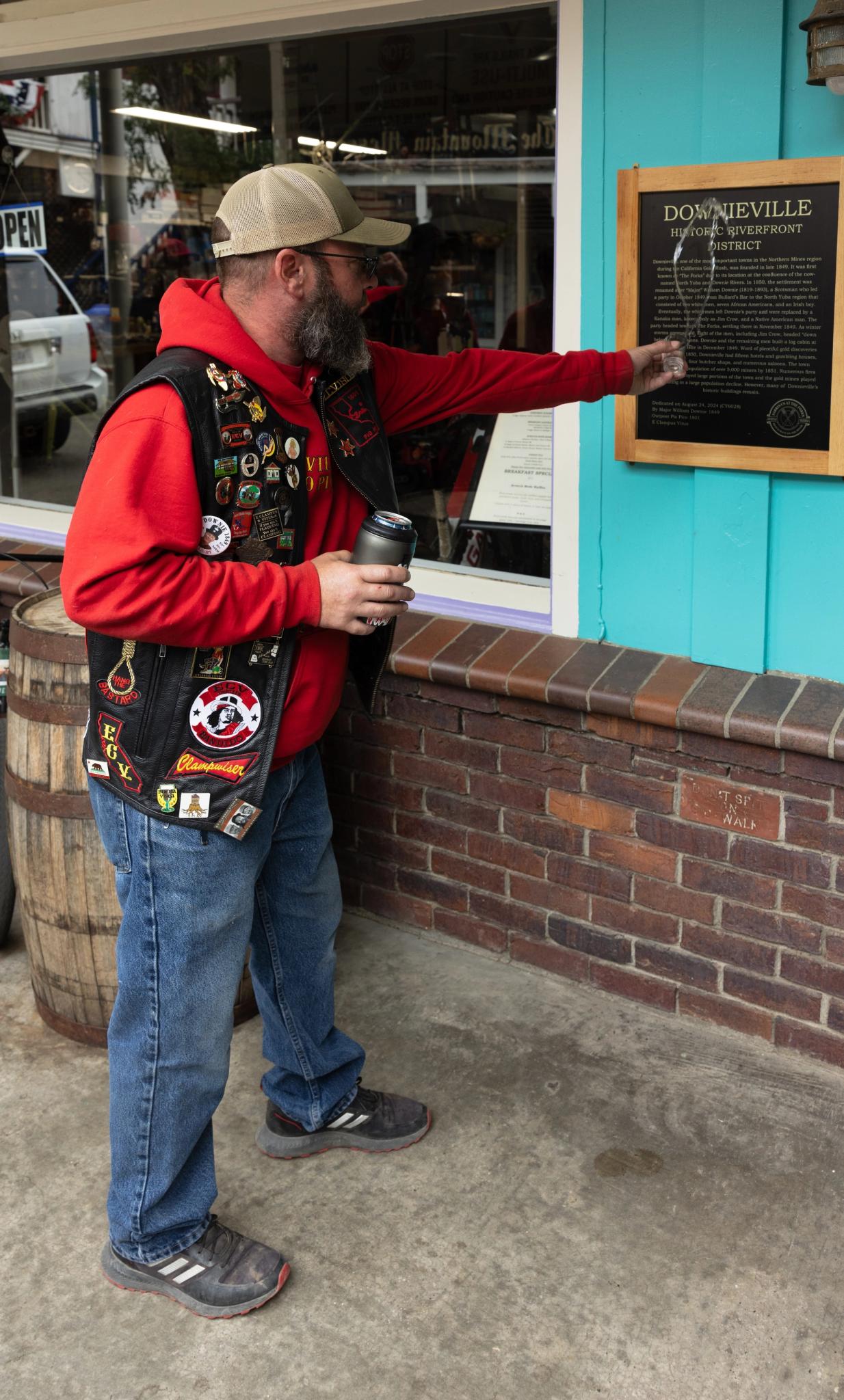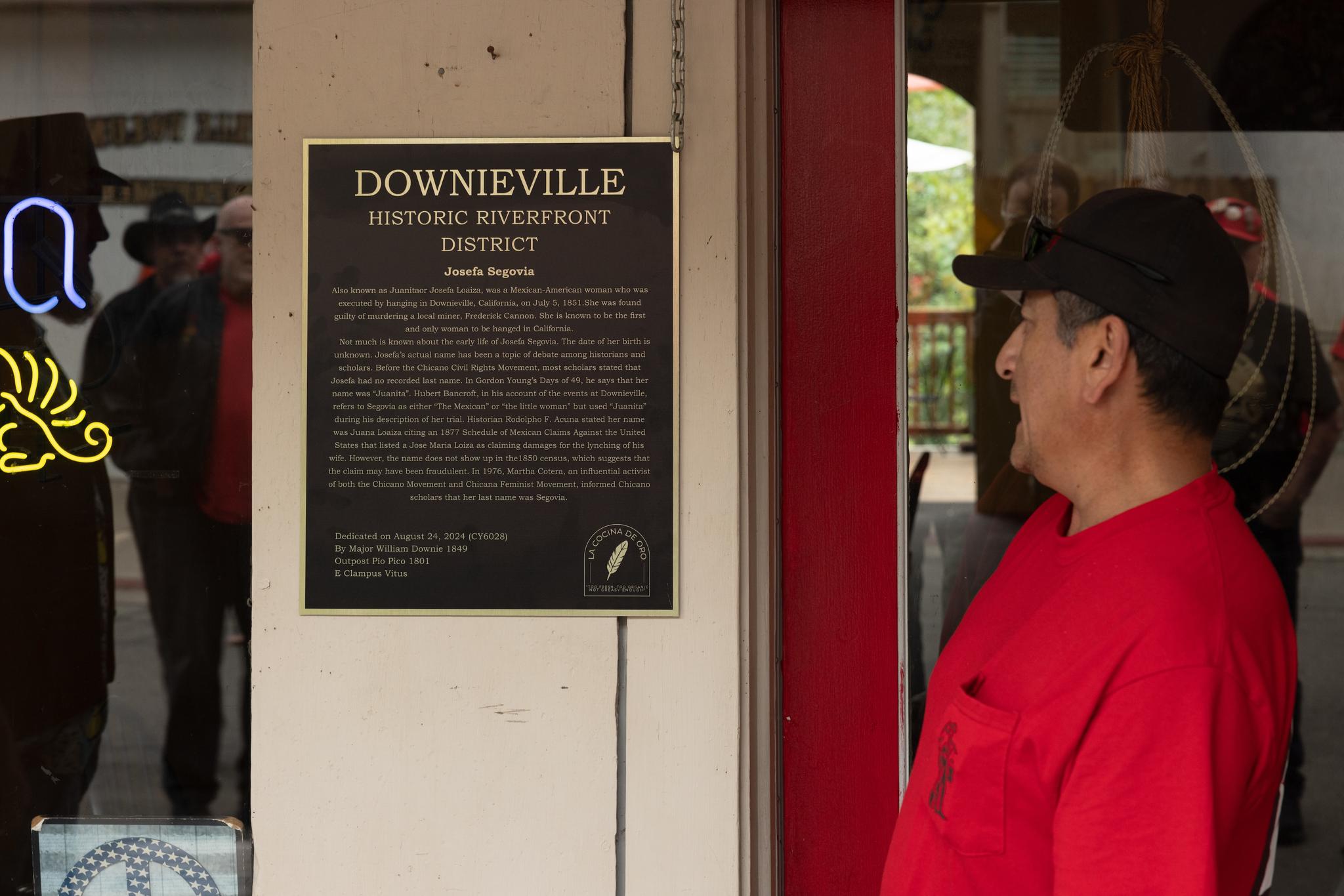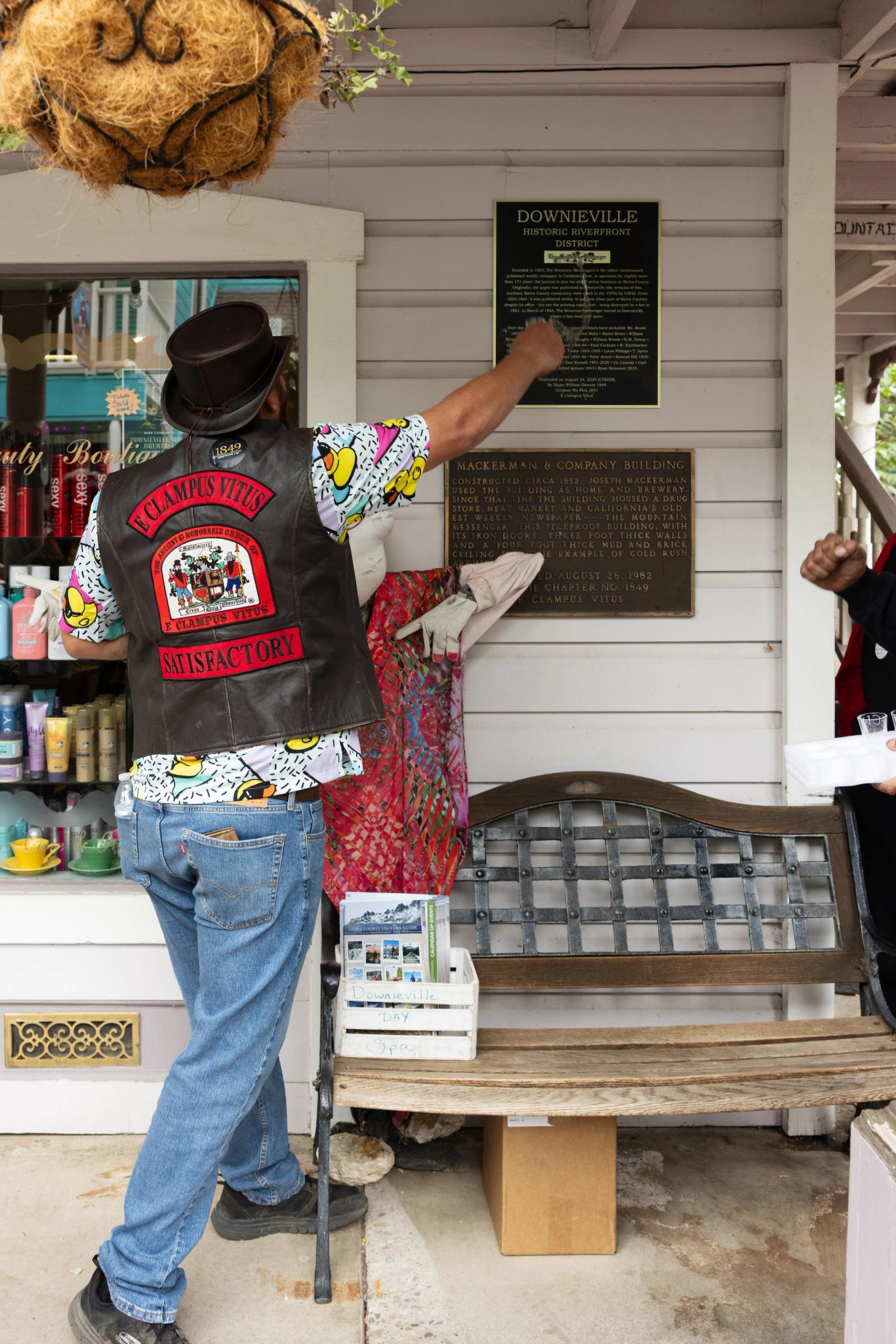E Clampus Vitus Dedicates Downieville Plaques
August 27, 2024
Updated August 27, 2024 at 3:30 PM
DOWNIEVILLE — On Friday, E Clampus Vitus completed the dedication of four new plaques outside local Downieville businesses. They chronicle Sierra County’s history and important regional historical events.

(Left to right) Lee (Duck) Todd (Noble Grand Humbug of E Clampus Vitus 1849), Christopher Hale, and Dave Dummer celebrate the plaque installed outside JADAA’s
The first plaque, located at JADAA’s, details several mining camps active in Sierra County during the Gold Rush. It states that Downieville reached a population of over 5,000 in the 1850s, followed by a significant decline after the Gold Rush. It also clarifies a common local myth: that Downieville lost out to being California’s capital by ten votes to Sacramento. While Downieville was indeed only ten votes behind Sacramento in the 1850 election, the town placed sixth, Sacramento fifth, and the winner, Vallejo, became the state capital for a short time.

Christopher Hale christens the plaque outside Sabrina’s at the Forks with a shot of vodka
The second plaque, at Sabrina’s at the Forks, describes the founding of Downieville by the party of “Major” William Downie in 1849. It says that Downie, a Scotsman, led a group consisting of two white men, 7 African Americans, and an Irish boy, later joined by a Kanaka man known as Jim Crow and a Native American man, settled at the Downie/Yuba River confluence in November of 1849. The plaque also says that, after word spread of plentiful gold deposits in the area, Downieville had fifteen hotels and gambling houses, four bakeries, four butcher shops, and several saloons by 1850.

Gil Alvira reads the plaque memorializing Jefa Segovia at La Cocina De Oro
Outside of La Cocina De Oro is a plaque commemorating Josefa Segovia, the only woman executed by hanging in California history. Very little is known about the history of the woman or the specific circumstances of the crime she was executed for, but she was found guilty of murdering local miner Fredrick Cannon and hanged on July 5th, 1851. Even her full name is not entirely known, though she is commonly referred to as “Juanita.”

Lee Todd dedicates a plaque outside The Mountain Messenger
The final plaque documents the history of The Mountain Messenger newspaper and its editors. Our paper was founded in Gibsonville in 1853, moved to La Porte in 1855, and finally to Downieville in 1864, where it remains today. It is the oldest continuously published weekly newspaper in California. Unfortunately, we cannot verify the accuracy of the editors listed on the plaque.
CORRECTION: A previous version of this article incorrectly stated that San Jose was chosen as the capital of California in the October 7, 1850 general election. The correct vote totals were: Vallejo, 7,477. Reed’s Offer (near San Jose), 651. Monterey, 399. Eureka, 301. Sacramento, 160. Downieville, 150. Nevada City, 82. Gilroy, 71. Benicia, 70. San Francisco, 25. San Diego, 14. Yuba City, 14. Hamilton, 10. Stockton, 6. Santa Cruz, 2.
Featured Articles

Sierra Hardware Plans Extensive Repairs After Flood Damage →
December 8, 2025
Sierra Hardware faces extensive repairs after Thanksgiving flood damages store flooring and drywall.
Sheriff’s Office Accepts $60,000 Grant for New Search and Rescue Team →
December 2, 2025
Confusion Surrounds Release of the Plumas County Grand Jury’s Report →
December 4, 2025
WCB Considers Grant for Sierra Valley Tribal Land Purchase →
Updated November 22, 2025
Downieville Fire Auxiliary Hosts Annual “Holiday on Main” Event Saturday →
December 2, 2025